How to give a chicken a bath
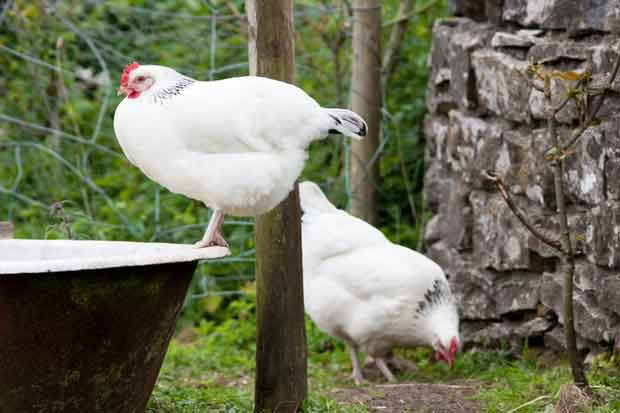
When it comes to preparing birds for the annual poultry show season, every one gets a wash, dry and blow wave.
Words and photos: Marina Steinke
When you want to look your very best, nothing beats a good pampering and it’s the same for poultry. The best birds in the country are on show from now until the end of July and it’s a great opportunity for anyone who loves poultry to see some of the best, most beautiful and rarest at their local show.
Giving a hen a bath isn’t as difficult as washing an unwilling dog or cat but it present its own challenges. Unlike four-legged pets, washing should be done 2-4 days before the fowl is to be exhibited to give the bird time to preen itself to bring its feathers back into perfect alignment.
Canterbury Poultry judge Gavin Greenwood bathed, scrubbed and groomed a Black Orpington bantam hen for an open day held by the Ashburton Fanciers Societyand, and also shared a few show secrets.
Note: if you treat a bird gently and keep it calm, there should be no stress for the bird during or after the bathing process.
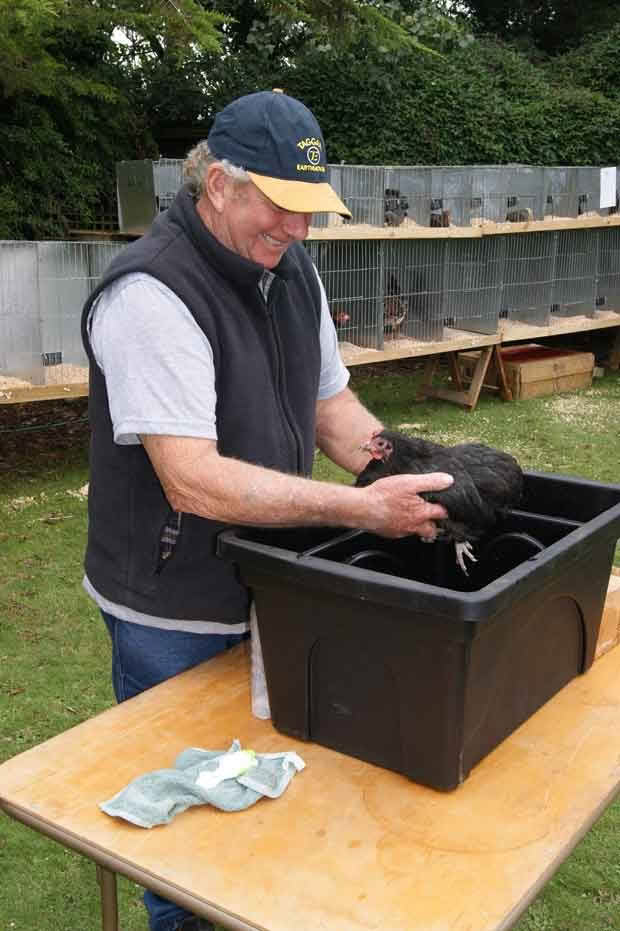
A plastic container, about the size of a fish bin, is half-filled with water which should feel comfortably warm but not hot. A bar of good quality soap or some hair shampoo can be added to the water which makes it easier to wet the feathers.
Try to use a basic soap – if you’re not sure of the soap you’re using, do a patch test (on a bird you are not planning to show) a few days beforehand so you can make sure it doesn’t cause any allergic reaction or discolouration of light-coloured feathers.
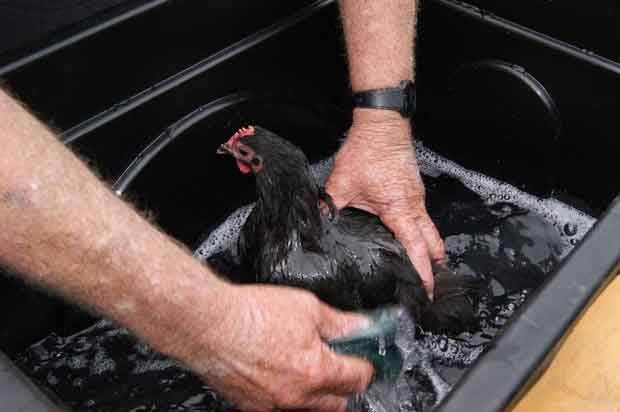
2. Carefully submerge the bird so that its back is covered with water. Gavin used a small towel to wet then he’s head and neck feathers so as not to cause her undue stress. This meant he could hold her securely with just one hand, a big help. Most birds remain calm when being washed and previous handling will also help with establishing a trusting relationship between bird and handler.
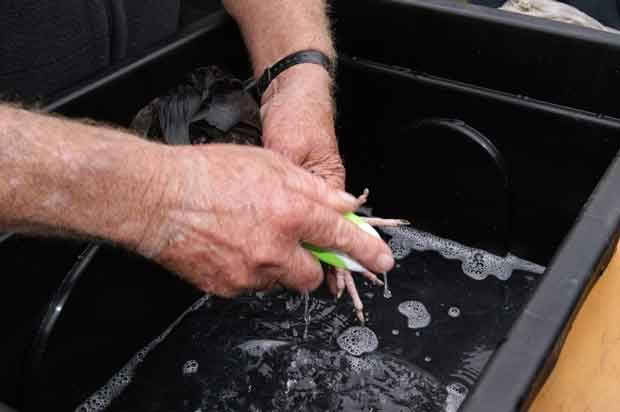
3. Use a soft nail brush to give its feet a thorough scrub and clean.
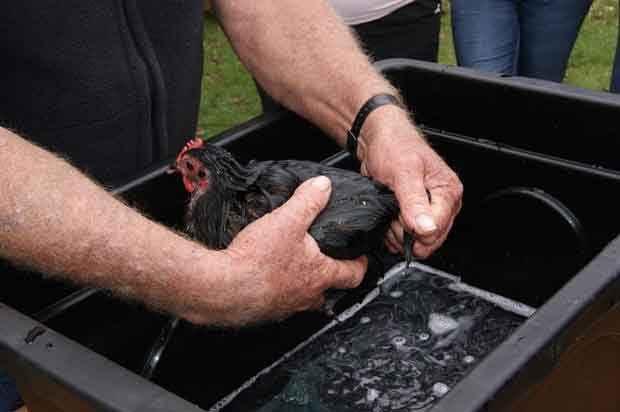
4. Lift the bird out of the water and carefully and gently squeeze as much water as is comfortable for the bird out of the plumage. Care needs to be taken to run with the feathers and to not bend them. Sometimes a second or even third bath is required to remove as much soap from the bird’s plumage as possible.
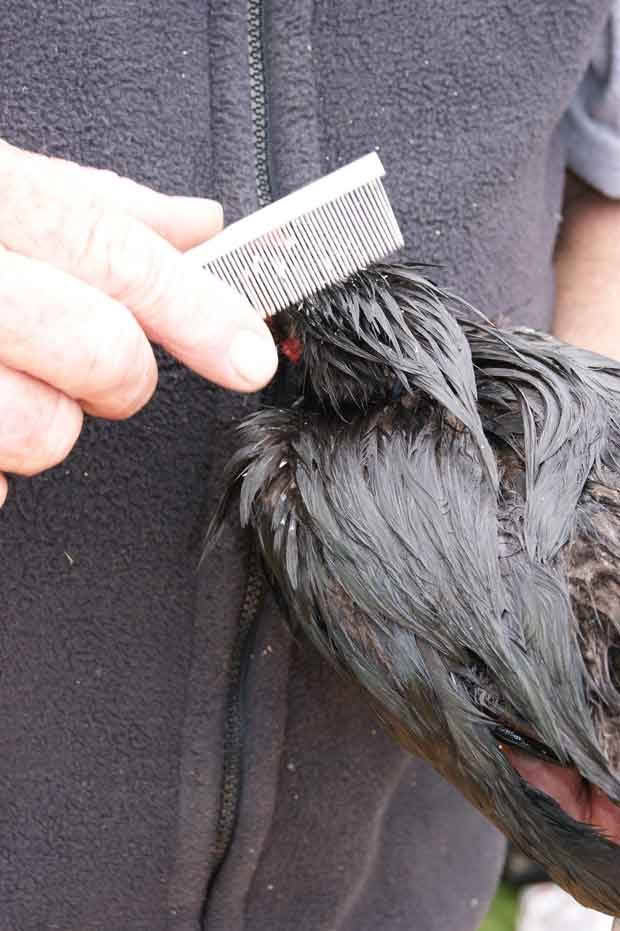
5. Remove the white feather sheaths with a metal dog grooming comb. These are little bits of keratin that have remained on the tip of the feather as it has grown out over moulting. It shouldn’t be firmly attached and should slide off easily.
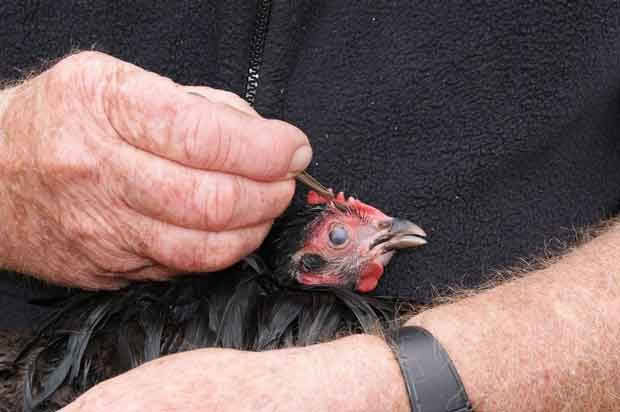
6. Gavin removed one small white feather from above this hen’s eye. This particular removal is allowed under the rules but if you are unsure, check with a senior member of your poultry club.
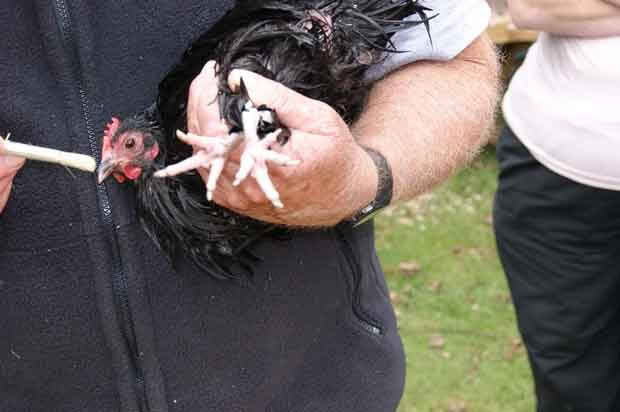
7. Apply a bit of clear food grade oil to the comb and feet with a soft paint brush to enhance the appearance. Olive or sunflower oil are suitable but you can also use something like baby oil to brighten up the comb.
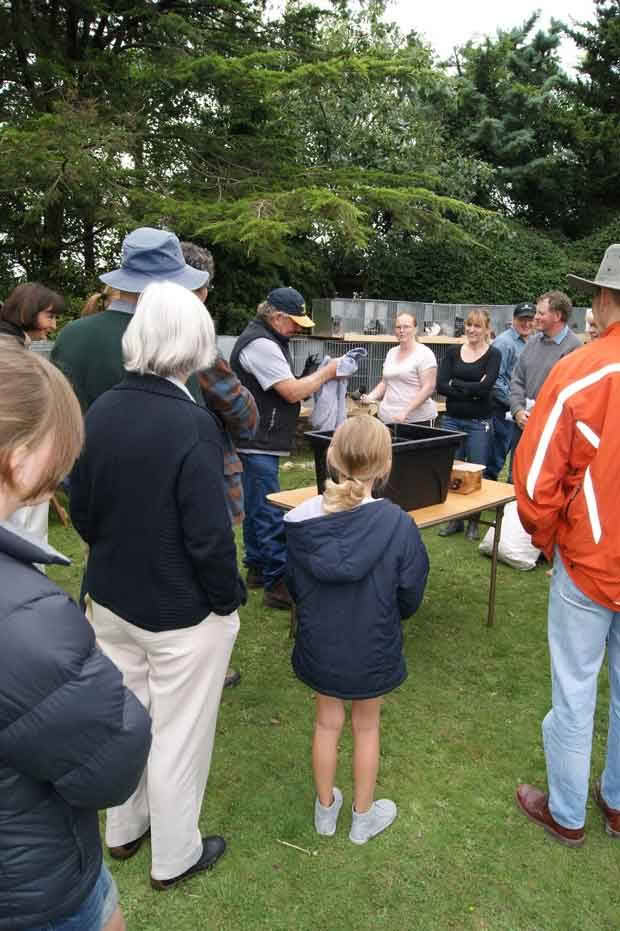
8. To finish drying the bird, stroke it with a large dry towel to remove as much moisture as possible before using a hair dryer on a low setting. Care must be taken to not expose a bird’s skin to the hot air for too long as they might get burned. Finally, a bird should be wrapped in a large dry towel to finish off the drying process.
TIPS
It takes time to properly prepare a bird for exhibition but it is well worth the effort as a well-presented high quality bird is a pleasure to view and judge.
• Keep lighter coloured birds (white, buff, blue) out of direct sunshine in the weeks leading up to a show as light colours can fade or discolour.
• Select the very best standard bred bird several weeks before the show date. Closely inspect each one to make sure it is well grown and healthy, meets all the requirements of the New Zealand Poultry Standard and does not have serious defects. If necessary treat for any sign of mites or lice. A bird that is sick and/or has loose manure should not be chosen.
• About two weeks before the show date place your selected fowl in a show training pen (one bird per pen), a replica of the show cage that will be used on the day. This should be kept meticulously clean; litter material is usually either sawdust or wood shavings and the bird’s droppings need to be removed twice daily to ensure it remains as clean as possible. Water should be provided in small raised containers to prevent splashing of water. To ensure the droppings are firm, only feed wheat or pellets.
• Regular handling is a very important part of show preparation and most fanciers take their fowls out of their cages twice a day to get them used to being handled. Stroking the fowl and talking to it are good preparation for the actual judging process. Being able to handle a fowl with one hand while keeping the other hand free is also a useful skill that can be practised during the daily handling sessions.
• Bathing should be done 2-4 days before the bird is exhibited.
• During winter, when a wood burner is used to heat the home, many fanciers wrap their birds in large towels and let them dry out in front of the fire after a bath.
• Once the date of the show has arrived, the fowl is put in a travel box (usually a wooden box with air holes). Once at the show, it is transferred to its assigned show cage. You can take this time to paint on more oil to enhance the appearance of the comb, wattles, ear lobes and legs.
3 STEPS TO PICKING UP A BIRD WITHOUT DAMAGING ITS FEATHERS (OR YOU)
1. To get a good grip on a bird, let your hand slide along its breast bone from the front towards the tail.
2. Position your forefinger (index finger) between its legs, clamping the legs with your thumb on one side and the remaining fingers on the other side. A small bird will rest in the palm of your hand. A large bird like the (moulting) Black Orpington rooster Roger McCormick is holding in the above pictures will rest on your forearm.
3. Held this way, the fowl should be calm and remain under control.
BEFORE & AFTER
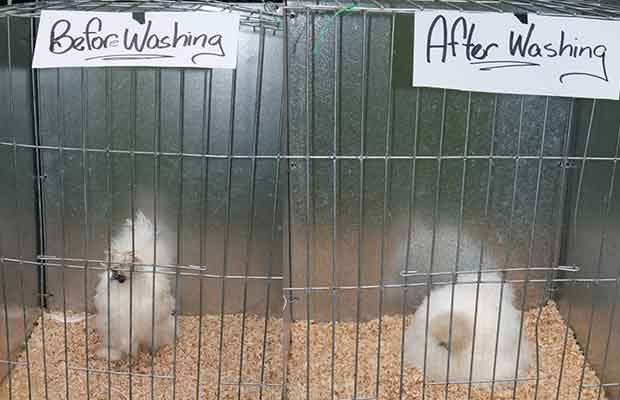
These two Silkies, both bred and owned by long-time Ashburton poultry enthusiast Brian Glassey, show how extreme the makeover can be. One is straight from its usual pen (left), while the other has undergone grooming in preparation for the show bench.
GET ALONG TO YOUR LOCAL SHOW
The poultry show season typically lasts from April until the end of July. For the general public it is a prime opportunity to view New Zealand’s most beautiful standard bred birds up close.
Poultry shows are held in large covered halls and all are open to the public once judging has finished, usually on weekend days so as many people can come along and have a look as possible. The entry fee is usually around $2-$5 for an adult and free for children so it’s a great winter-time outing for the whole family.
Thank you to the Taylor family of Ashburton who hosted this event and provided their hen for the demonstration.
Love this story? Subscribe now!
 This article first appeared in NZ Lifestyle Block Magazine.
This article first appeared in NZ Lifestyle Block Magazine.
